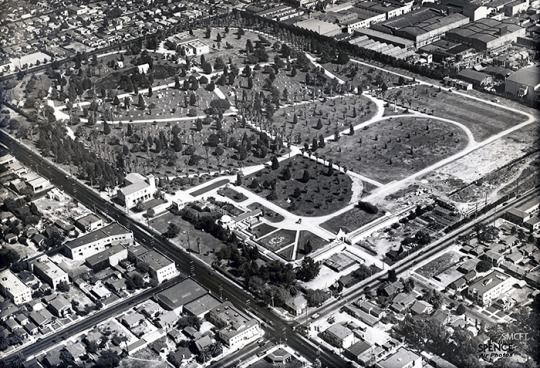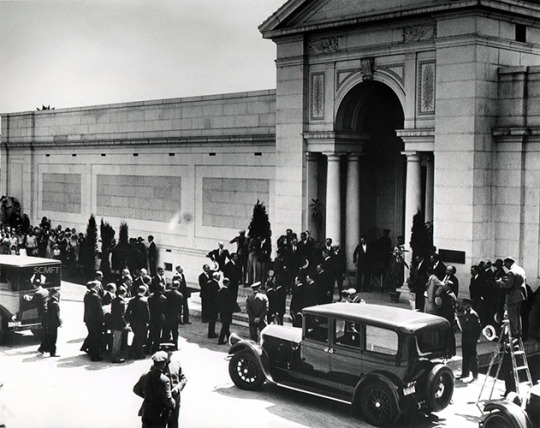#The Samuelson Mausoleum
Text
Time Flys
Wow! When Karen told me we needed to start packing today I was honestly surprised. In the last 2.5 weeks we have had three amazing house sits with a liberal dose of challenges and wonderful discoveries.
While we were in Chertsey we enjoyed a wonderful variety of weather which made photography a joy. The view of the Chertsey Bridge was different every time we took the dogs out for a stroll.
A…

View On WordPress
#autumn#Bath#Bath Abbey#Chatley Heath Semaphore Tower#Chertsey#Chertsey Bridge#England#High Sheriff#house sitting#Ockham Common#photography#Queen Anne&039;s Ride#retirement#Sally Lunn&039;s Buns#The Samuelson Mausoleum#travel#Windsor
0 notes
Text
Hollywood Forever Cemetery

In 1899, F.W. Samuelson purchased 100 acres bounded by Santa Monica Boulevard on the north, Melrose Avenue on the south, Gower Street on the west, and Van Ness Avenue to the east, from the Gower family. The Gower’s holdings stretched from Melrose Avenue to Sunset Boulevard, right in the heart of Hollywood. Samuelson incorporated the Hollywood Cemetery Association and proceeded to lay out the grounds for a memorial park. Entrance gates, an administration building, and a chapel were erected. The first interment took place in 1901. During its first two decades, the cemetery became the final resting place for Hollywood’s pioneer families: Wilcox and Beveridge, Griffith W. Griffith, Cornelius Cole, Charles Toberman, H.J. Whitley, and the Gower family itself.
In 1917, the cemetery sold nearly half of its southern acreage to Peralta Studios, an early motion picture facility. That land that later became the home of Paramount Pictures and RKO Studios. At the same time, development of the northern acreage began in earnest. The first phase of the Cathedral mausoleum was designed and built in 1919 by the prominent Los Angeles architecture firm of Marston and Van Pelt, eventually housing 1400 crypts and making it one of the largest mausoleums in the world at the time. Other elaborate private mausoleums, many designed by other prominent architects, also inhabit the grounds. A particularly notable one being that of William Andrews Clark Jr. and family, designed by Robert D. Farquahar in 1921. The Jewish section of the cemetery, Beth Olam, was created in the southwest portion of the grounds in the 1920s and remains one of the oldest active Jewish cemeteries in California. As the complex developed, manicured grounds were laid out in sections with curvilinear pathways connecting them. Major structures for administration, worship, and burial were located on the periphery. A series of water features in the Garden of Legends and near the Fairbanks Lawn added to the ambience.

Hollywood Forever Cemetery under construction in 1932
Morgan, Walls, and Clements created the current administration building at the northern entrance in 1931. The signature building had multiple uses and is acclaimed for its vast employment of travertine and grand meeting spaces utilized by the Masons and Order of the Eastern Star. “Scores of actors, directors, producers, writers, cinematographers and composers rest within its walls”, says the site’s official walking guide, most notably: Judy Garland, Cecil B DeMille, Douglas Fairbanks Sr. and Jr., Charles Chaplin Jr, Al and Charles Christie, Bebe Daniels, Marian Davies, Janet Gaynor, David Horsley, Jesse Lasky, Barbara LaMarr, Tyrone Power, Fay Wray, and the Talmadge sisters Norma, Natalie and Constance. Other prominent citizens included Los Angeles Times’ owners and publishers Harrison Gray Otis and Harry Chandler. There is also a memorial to Oscar winning Black actress Hattie McDaniel, though she was not allowed to be interred there when she died.

Rudolph Valentino's casket being carried into the Grand Mausoleum
One of Hollywood’s most persistent legends surrounds the death of silent film star Rudolph Valentino in 1926. Valentino’s sudden death triggered a national outpouring of grief from his overwrought fans. After his funeral in New York City, he was interred in crypt 1205 in Hollywood Cemetery’s Grand Mausoleum. Each anniversary of his death was acknowledged in a ceremony and attendees soon began to note the presence of a mysterious “Lady in Black”. Several actresses claimed the title and fabricated versions of their relationship to the star. The tradition and its fantasies continue to this day.
The cemetery became run down by the latter part of the century. There were allegations of mismanagement and the State halted the sale of plots. In 1998, Tyler Cassidy of Forever Enterprises purchased the 60-acre site and began a rehabilitation, changing the name to Hollywood Forever Cemetery. The management introduced new uses with concerts, outdoor movie screenings, Dia de Los Muertos celebrations and more, soon creating a wildly popular new social destination and cultural scene for a new generation of Los Angelinos. An ongoing restoration and development plan ensure the cemetery will be utilized well into the 21st century, and hopefully beyond, as Andy Warhol famously quipped, “The idea is not to live forever, it is to create something that will."
~Christy McAvoy, Historic Hollywood Photographs
Sources: Bruce Torrence archives; E.O. Palmer’s History of Hollywood V. 1; Hollywood Forever Official Walking Guide
#historic hollywood photographs#hollywood#hollywood forever cemetery#movie stars#burial ground#mausoleums#rudolph valentino#cemeteries#Architecture#history#Parks and Recreation
0 notes
Photo

What do we really know about Kim Jong Un’s departure from the public eye? There is talk that the North Korean leader is “in grave danger” or “a vegetative state”; that he suffered a “botched” heart operation; that he was wounded by an explosion from a missile test; and so on. Not impossible. But let’s start with what we actually, factually, know. First, recall Nobel laureate Paul Samuelson’s famous adage that the stock market has correctly predicted nine of the past five recessions. So, too, the relation between prolonged Kim family disappearances and supreme leader funerals. Every tyrant in the Kim family regime has gone missing multiple times, and for extended periods, only to pop up again alive and in charge. In one memorable incident in 1986, loudspeakers at the demilitarized zone started playing funeral dirges and offering gushing eulogies to dynasty founder Kim Il Sung — but the music quickly stopped and the great leader returned to center stage. We still don’t know exactly what that was about. During Kim Jong Il’s timeouts, all sorts of theories surfaced from quasi-official sources in Seoul: The playboy had cracked up his racing car; he had fallen off a horse; his drinking finally got the better of him. The dear leader proved such rumors wrong for a generation. As for Kim Jong Un, recall that he skipped photo ops for one six-week period in 2014 — prompting speculation of coups and injuries, all forgotten when he surfaced. This year, the man known as “Dear Respected Leader” took off for 22 days before turning up to lay a birthday wreath at his father’s mausoleum. Catastrophic theorizing is not required to explain why Kim Jong Un might be scarce these days. North Korea is about to enter month four of an officially declared “anti-epidemic emergency.” The regime has responded to the coronavirus pandemic with an alarm verging on panic; North Korean propaganda — not known for admitting to internal vulnerabilities — has been screaming that the virus is a threat to “national survival” and could have “catastrophic irreversible consequences.” https://www.instagram.com/p/B_uagpoHeip/?igshid=10uccsj45nd4s
0 notes